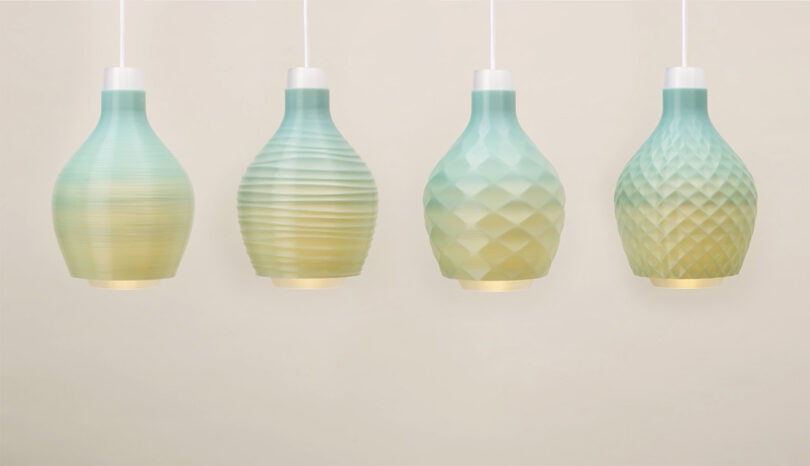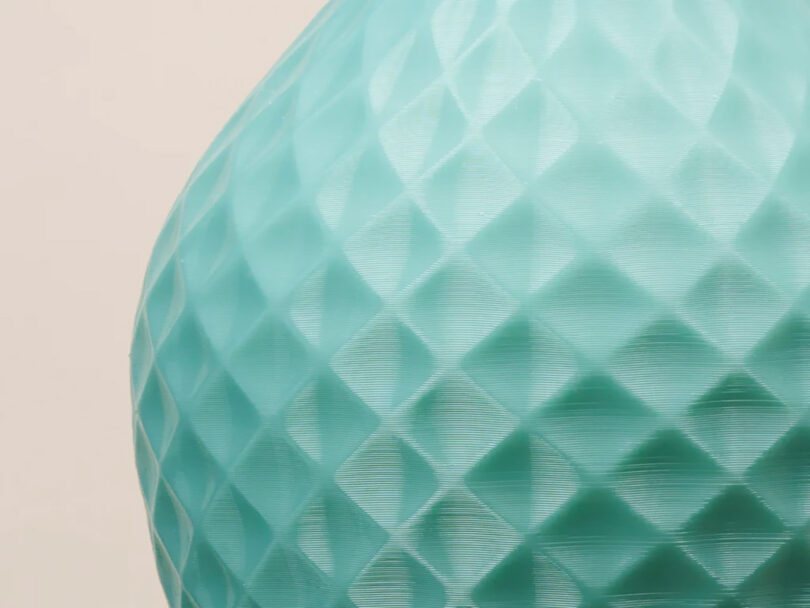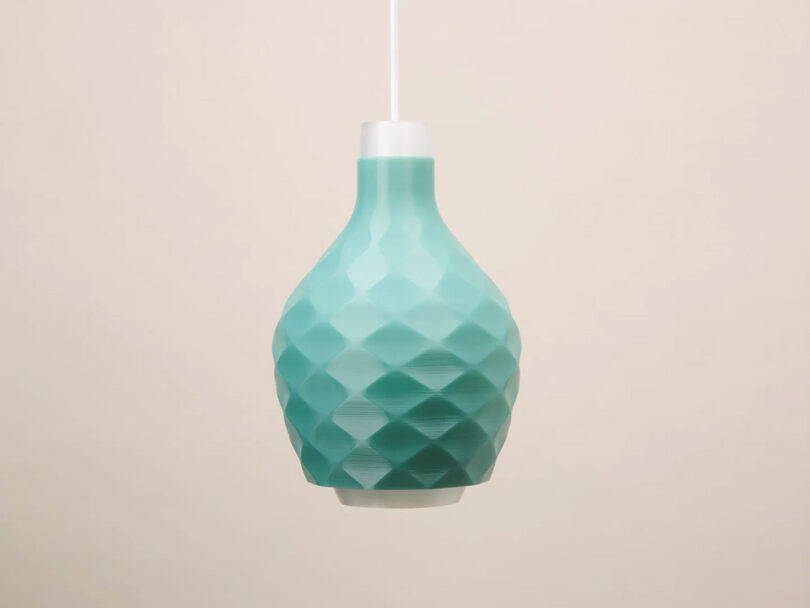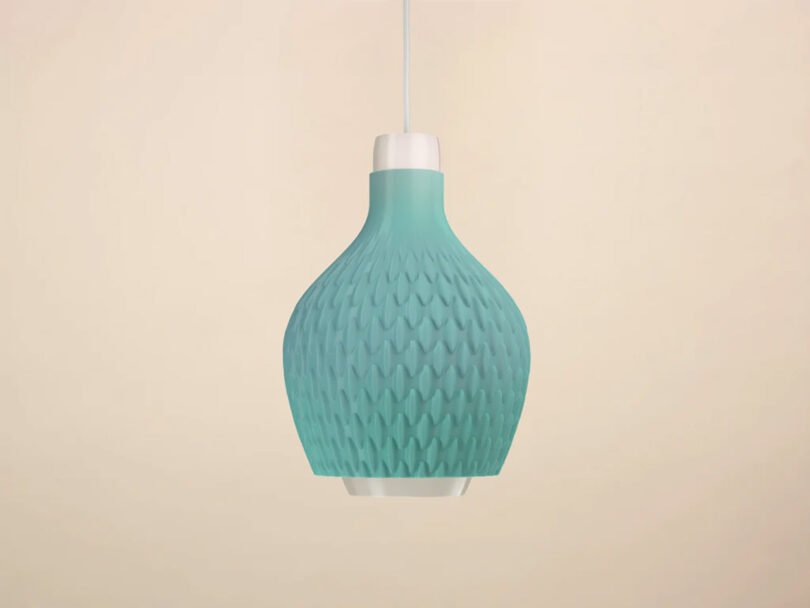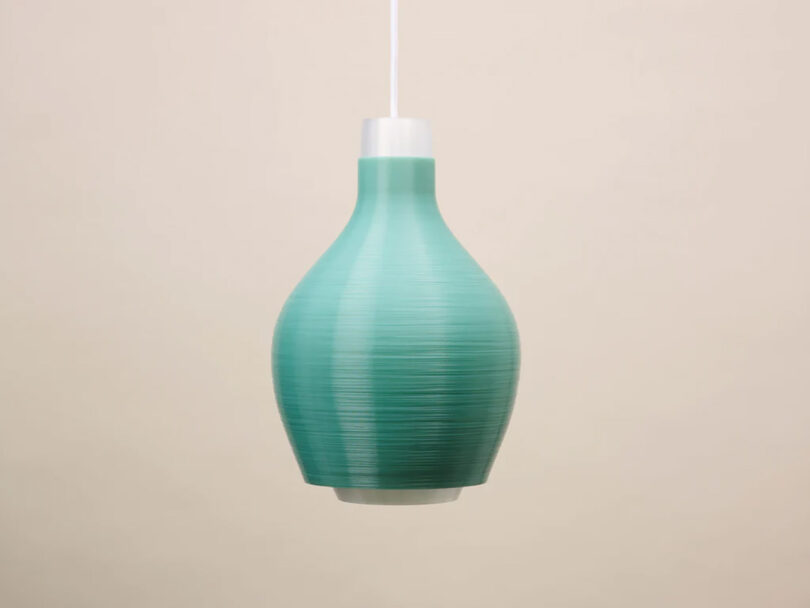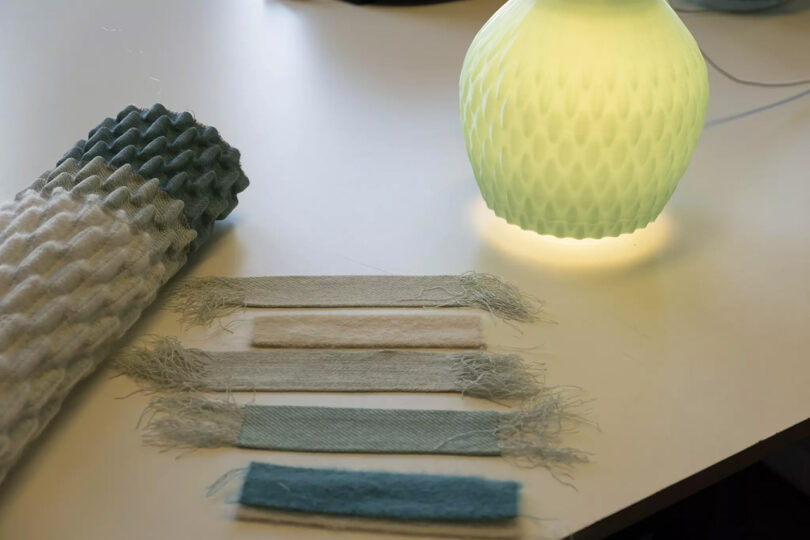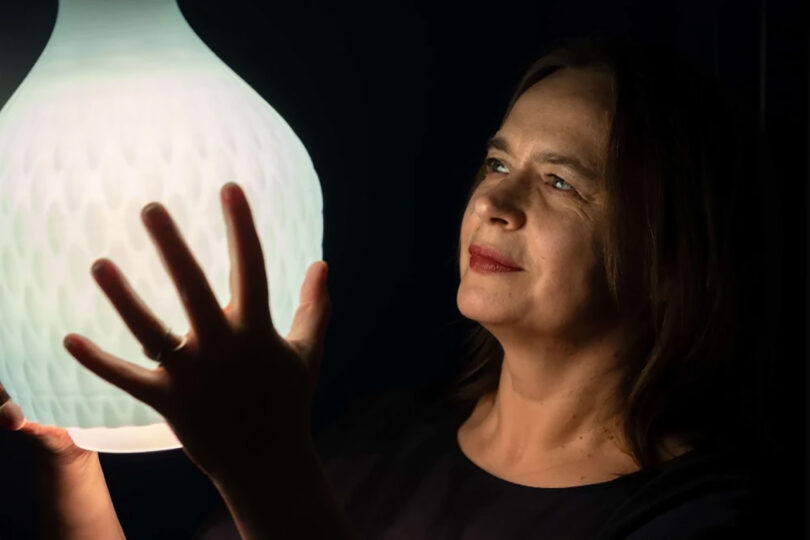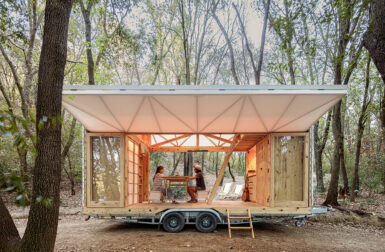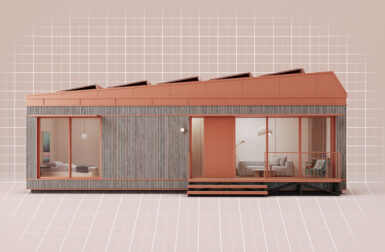
Designer Aleksandra Gaca’s pioneering efforts across the realm of 3D-woven textiles has won her acclaim for materials exhibiting a rhythmic topological complexity hinting of movement or even growth. Fearlessly experimental, Gaca’s weaving techniques have appeared within the interior cabin of a concept car, across 3D woven textile acoustic panels, and applied to her own chic shawl. Open to new challenges, Gaca partnered with Philips MyCreation to explore utilizing recycled fishing nets to “weave” a series of luminaires into the brand’s Coastal Breeze collection.
Manufactured completely with recycled synthetic polymeric fibers, all four pendant designs are composed of innumerable layers printed to evoke the textures of sand dunes, rippling water, and fish scales, each exhibiting the same characteristic blue green color of the fishing nets from which they were born from. A pleasing benefit of reusing the recycled synthetic polymers is the subtle gradient from green to yellow that only becomes visible when illuminated.

Small irregularities in the 3D-printing process are embraced by Gaca as a unique fingerprint each made-to-print light exhibits.
“I find inspiration in geometric and abstract shapes in architecture, and patterns found in nature,” explains Gaca. “My main focus is on developing designs that offer sensory experiences, just like the way nature does. I want to create fabrics that are not just visually appealing but also offer a tactile and even auditory experience, all contributing to a better living and working environment.”
Philips sourced the discarded fishing nets in collaboration with Fishy Filaments in Cornwall, United Kingdom to help reuse a portion of the 200,000 tons of new fishing net manufactured annually. The technology giant then needed to develop a new process to handle the material, first sorting, cleaning, then melting the nets to eventually be reformed into a 100% recycled filament that could be used to translate Gaca’s soft textile geometric patterns into solid lighting objects.
Previous 3D-printed luminaries within the MyCreation catalog were made with at least 55% recycled or bio-circular materials. The Coastal Breeze collection is the brand’s first using 100% recycled materials.
ThePhilips MyCreation Coastal Breeze collection is just one of numerous 3D-printed design styles the brand now manufactures on demand. There’s also Icelandic-inspired lamps, Japanese lantern designs, and intricately textured table lamps made to look and feel like wicker, amongst numerous other contemporary options.
With plastic waste being an enormous environmental issue, sustainable design will require more companies to adopt similar bio-circular sourcing and manufacturing processes, scaled to become the rule, rather than the exception to reduce carbon emissions, eliminate waste, and create a circular economy where plastic is reused in perpetuity.















